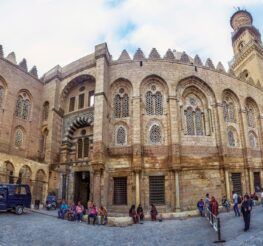African Kite Course Racing Championships 2013: World Class Kite-Surfing in Soma Bay

Jessica Noble
Having emerged in the 1970s, kitesurfing – or kite-boarding – didn’t gain popular recognition as a practiced water-sport until the mid-1990s. Combining elements of water-skiing, surfing, paragliding, wake-boarding and more, kite-surfing demands both physical and mental strength, technique and skill. As a sport, kite-surfing takes place in seas all over the world and is a fast-paced, high-speed, extreme sport that uses a small, wooden or foam, board complete with detachable foot straps for both balance and tricks.
The first international kite-surfing competition was said to be held on the Hawaiian island of Maui in 1998. In October 2010, American kite-surfer and professional sailor, Rob Douglas, set the world record for the fastest kite-surfing, racing at speeds of 55.65 knots (103km/h). Since then, the wild sport has become so popular internationally that it has become a possible candidate in the future Olympic Games.
Although kite-surfing is both thrilling and stimulating for the rider, it can also be a fairly hazardous sport, with 105 accidents and 14 fatalities reported on the Kiteboarding Safety Information Database over three years (2000-2003). However, organisations and kite-surfing schools aim to reduce accidents through thorough safety training and precautions.
Managed by the Orca Dive Club, the 7BFT Kite House in Egypt’s very own Soma Bay is notorious for its excellence in teaching and testing of kite-surfing, which is why, this year and every year until 2015, it will host the African Kite Course Racing Championships. The bay, just 45km from the city of Hurghada, is known for its beauty, steady winds and smooth water conditions, making it an ideal place for both kite-surfing and other, similar water-sports. The deciding heats and championships will be held from the 24th-29th March, with the prize money totalling a whopping 20,000 Euros. The Kite Houses’ four star hotel – The Breakers Diving & Surfing Lodge – is often first choice for surfers because of its sandy beaches, coral reefs and close proximity to the dive centre.
Authorised by the International Kiteboarding Association, the championships will be measured as a 100 point event, according to the International Sailing Federation (ISAF) – the world governing body of sailing yacht racing. The competition is open to candidates from all around the world, so long as they are members of an organisation affiliated with ISAF. This year, although allocated spaces for each gender were higher, around eighty men will take part, alongside a smaller number of just twenty women.
As well as being measured for their high-speed, kite-surfers will also be mediated for their tricks in four categories: wave-riding, free-styling, course racing and slalom. The wave-riding discipline demands a great amount of skill as the rider must conquer the natural surf in sometimes unpredictable weather; riders go head to head with one another and are tested by the placement of obstacles on the water. Slalom, also known as kite-cross, is perhaps the most exciting to watch, as up to a hundred competitors take to the water at one time, clearing a course of obstacles at high speed whilst having to show awareness of the others around them, so as not to become tangled with another rider – an accident that can result in disqualification. Alongside a smaller crowd, and therefore allowing more freedom, the course racing category tests the tactical manoeuvres and speed of each surfer. However, most surfers best enjoy the freestyle as this is considered the ‘mother’ of kite-boarding as with little set-structure, it best allows the candidate to show off the diversity of their skill.
Each candidate is clearly visible in their uniform, and men and women are graded separately by the panel of judges. Said judges will also closely monitor any signs of misconduct, all of which are set out in the ISAF kite-board competition rules, which are revised every four years. Interestingly, a competitor’s clothing must not weigh more than 8kg, including footwear, whilst their drinking container shouldn’t weigh more than 1.5kg at its full capacity – being heavier may result in an unfair advantage.
This year, the African Kite Course Racing Championships in Soma Bay is expecting a huge turnout and happens to be the first of its magnitude. Spectators will enjoy watching the awe-inspiring talent from some of the most experienced kite-surfers on the globe and may even get to meet them at some of the after party events at the resort. For more information on the championships, visit their official page. http://www.kiteafricans.com/
recommended
 Arts & Culture
Arts & Culture
The Coptic Museum: The History of Egypt to the Tunes of Psalms of David
arts & culture cairo museums +4 Health & Fitness
Health & Fitness
Egyptians in the 2024 Summer Olympics
Egyptians in the Olympics Olympics +1 City Life
City Life
Weekend Guide: Bazar by Sasson, Memo, The Cadillacs, Heya Bazaar, Dou, Nesma Herky & More
Concerts The Weekend Guide +2 Arts & Culture
Arts & Culture

